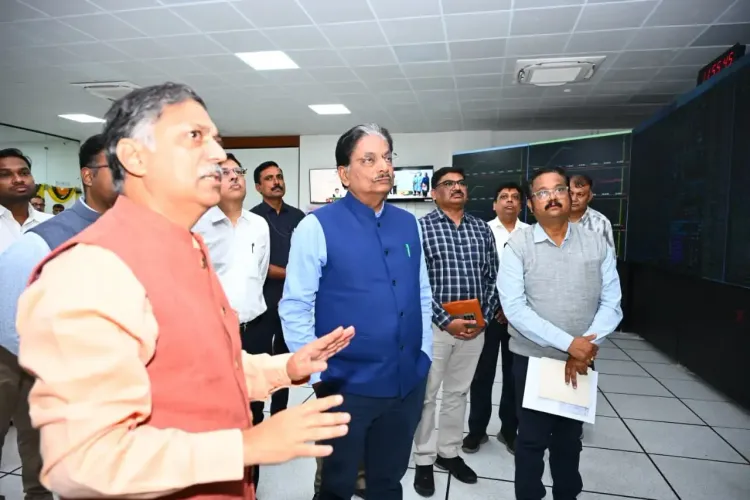How is Gujarat's Energy Minister Enhancing Power Infrastructure?

Synopsis
Key Takeaways
- Increased Automation: Focus on automating electricity distribution and customer service.
- Critical Facilities Inspected: State Load Dispatch Centre and 220 kV substation were key stops.
- Renewable Energy Commitment: Significant investments in solar and wind energy.
- Enhanced Customer Services: Emphasis on improving consumer experience through digital processes.
- Leadership in Power Infrastructure: Gujarat aims to lead with tech-driven solutions.
Vadodara, Nov 14 (NationPress) Gujarat's Energy Minister Rushikesh Patel conducted an inspection of several vital power sector facilities, highlighting the necessity to increase automation across electricity distribution, monitoring, and customer service to boost both efficiency and service quality.
This marked his first significant review visit to Vadodara since assuming leadership of the state’s Energy Department in the newly established cabinet.
The minister commenced his inspection at the State Load Dispatch Centre (SLDC), the 24/7 control hub responsible for overseeing the electricity demand-supply equilibrium across Gujarat.
Senior officials, including Jenu Devan, Upendra Pandey, Preeti Sharma, and Somesh Bandopadhyay, provided him with insights into real-time power load management, pricing oversight, and the systems that guarantee uninterrupted electricity throughout the state.
Patel referred to the SLDC as the “heart of the energy department,” evaluating its energy accounting operations and offering advice on preparing for future challenges within the sector.
He then proceeded to the 220 kV substation at Gotri, where he observed transformer operations, including crucial step-up and step-down mechanisms necessary for stable power distribution. Patel urged officials to enhance engineering processes to ensure improved service reliability.
At the Supervisory Control and Data Acquisition (SCADA) Centre and the Central Processing Centre, the minister reviewed digital monitoring systems, applications for new connections, load modifications, and infrastructure-related workflows.
He emphasized the importance of upgrading digital processes to facilitate faster approvals and smoother operations.
Concluding his visit, Patel toured the Customer Care Centre at Kuber Bhavan, where he personally evaluated how 14 vital consumer services—ranging from meter name alterations to fault resolution and new connections—are provided.
He monitored complaint resolution through toll-free helplines, social media, email, and WhatsApp, even taking live calls to understand service gaps firsthand.
The minister instructed officials to expand automation in customer services, stating that it would enable quicker responses, lessen reliance on manual interventions, and significantly enhance the consumer experience.
The state has made substantial investments in renewable energy, particularly solar and wind, integrating large capacities into its grid using modern load-management tools.
Distribution companies are swiftly transitioning to automated processes for new connections, load alterations, and fault detection, backed by unified customer care centres and digital service platforms.
Ongoing upgrades, including smart metering, high-capacity substations, and enhanced engineering standards, have positioned Gujarat as a leader in reliable and technology-driven power infrastructure.









